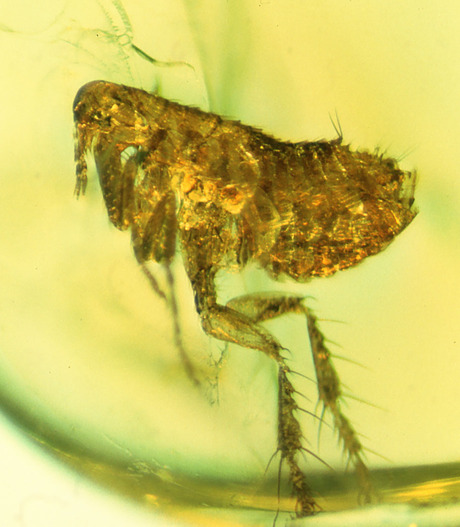The bubonic plague — 20 million years in the making?

When it comes to researching the world of prehistoric Earth, the world of Jurassic Park will tell you that the most extraordinary discoveries can arise from something as simple as an insect trapped in amber.
Now it appears that such a discovery has occurred in real life, with Oregon State University (OSU) entomology researcher George Poinar, Jr unearthing what he believes is a 20-million-year-old strain of the bubonic plague.
In amber mines in the Dominican Republic, Poinar found a single flea that had been entombed in amber, with a tiny amount of bacteria attached to the tip of its proboscis (the mouthpart used for feeding) and compacted in its rectum. Writing in the Journal of Medical Entomology, Poinar suggests that the flea “may have become entrapped in resin shortly after it had fed on an infected animal", noting, “Rodent hair has been recovered from that amber source."

The fossilised bacteria is said to share traits with the modern form of the Yersinia pestis — the cause of the plague which halved Europe's population during the 14th century. The fossilised bacteria are coccobacilli — bacteria with a shape “intermediate between spherical cocci and rod-shaped bacilli", according to Ponair — which fall within the size range of vertebrate pathogenic bacteria, including Yersinia, transmitted by fleas. Ponair further notes, “Of the pathogenic bacteria transmitted by fleas today, Yersinia is the only one that forms both short rods and nearly spherical cells.
“Aside from physical characteristics of the fossil bacteria that are similar to plague bacteria, their location in the rectum of the flea is known to occur in modern plague bacteria," Poinar continued. “And in this fossil, the presence of similar bacteria in a dried droplet on the proboscis of the flea is consistent with the method of transmission of plague bacteria by modern fleas."
Here, Poinar is referring to what happens when a flea feeds on the blood of a plague-infected animal. The Yersinia pestis bacteria taken up with the blood often form a viscous mass in the flea's proventriculus, located between the stomach and oesophagus. When this happens, the fleas can't obtain enough blood and attempt to feed again; as they do so, bacteria are often forced back out through the proboscis and into the wound.
Poinar believes the dried droplets on the proboscis of the fossilised flea could represent a sample of the sticky bacterial mass that was regurgitated. Furthermore, he is very much aware of the fact that such regurgitation is in part what makes fleas effective vectors of plague.
So how likely is it that Poinar's theory is correct? One thing working against him is the evidence of modern genomic studies which indicates that the flea-plague-vertebrate cycle evolved only in the past 20,000 years, rather than 20 million. However, today there are several strains of Yersinia pestis, and there is evidence that past outbreaks of plague were caused by strains which are extinct today.
Furthermore, while human strains of Yersinia could feasibly have evolved between 10,000 and 20,000 years ago, Poinar suggests that ancient Yersinia strains that evolved as rodent parasites could have appeared long before humans existed — and would certainly be extinct by now.
“If this is an ancient strain of Yersinia, it would be extraordinary," Poinar said. “It would show that plague is actually an ancient disease that no doubt was infecting and possibly causing some extinction of animals long before any humans existed. Plague may have played a larger role in the past than we imagined."
Blood test for chronic fatigue syndrome developed
The test addresses the need for a quick and reliable diagnostic for a complex,...
Droplet microfluidics for single-cell analysis
Discover how droplet microfluidics is revolutionising single-cell analysis and selection in...
PCR alternative offers diagnostic testing in a handheld device
Researchers have developed a diagnostic platform that uses similar techniques to PCR, but within...







